Right, enough of the festive season frivolities (was New Year really only 3 weeks ago?!). It’s time to get back to the serious stuff.
Vintage 2024 is creeping up on us, so let’s see what we’ve missed in the vineyard while we’ve been focussing on other things…
The rain and warm weather have really been pushing things along this week. Look at that little red line go!
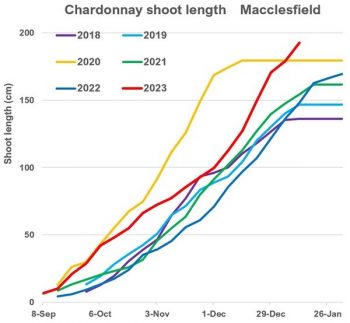
The berries of early varieties are now hard and green (E-L 33). Some late varieties may still be at bunch closure (E-L 32).
There have also been widespread reports of traces of colour starting to show in Pinot Noir. This means veraison (we’ll chat about this again soon if you’ve forgotten what that is) is just around the corner.
There is no doubt that vintage will be ahead of last season (by between 2.5 and 4 weeks). But we won’t be able to predict that more accurately until veraison.
Vintage challenges
Despite all the forecasters sticking to their story that El Niño conditions will prevail, we’ve had a lot of rain (above average in December). And not only that, but the season started off pretty cold. I mean, who thought that many of us would have been considering lighting the fire on Christmas Day here in the Hills!
The weather has caused a series of challenges for vintage 2024.
Starting with…
Fruit set
Cold weather at the beginning of the season is never great news for fruit set. Then we also had a couple of heavy rainfall events right in the middle of all that which upset flowering.
So, the amount of fruit on vines across the region is low. It looks like we’re going to have problems with yield again.
Currently the big problem for growers is disease pressure. Let’s take a closer look at the big three…
Downy Mildew
Here is a quote from last week’s CropWatch report…
“Downy mildew pressure remains high, and it is reasonable to say that if managers have not found any downy mildew spots in their vineyard this season, then they probably haven’t looked hard enough.”
Downy Mildew is a pain the backside disease. Once you have it in your crop you pretty much have it for life. The key to keeping it under control is to keep an eye on the weather.
The weather conditions conducive to an infection period for powdery mildew are…
At least 10 mm rainfall over a 24-hour period during which the temperature does not go below 10 degrees Celsius (commonly referred to as “10:10:24”).
In these conditions, dormant downy mildew spores erupt from the soil and “splash” (or mist) onto the canopy of the vines. And when I say “dormant”, they can happily live in the soil for up to 10 years!
This process is the “primary infection” – the spores have now infected the leaves along with the developing flowers/bunches.
The only way to stop downy mildew from damaging the crop is to apply fungicides. This photo shows what strategic use of fungicides can achieve.
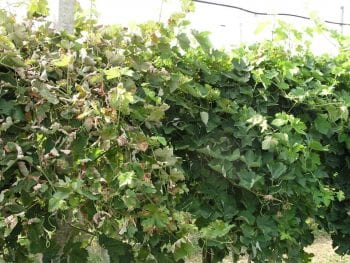
The section on the left is an untreated downy mildew infection, while the section on the right has been sprayed.
Loving our blog? Sign up for weekly updates straight to your inbox…
Powdery Mildew
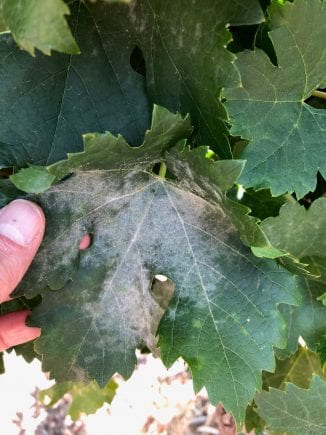 Unlike downy mildew, which lives and stays dormant in the soil, powdery mildew spores live on the grapevine itself.
Unlike downy mildew, which lives and stays dormant in the soil, powdery mildew spores live on the grapevine itself.
The other key thing that differentiates powdery from downy is that powdery mildew doesn’t rely on rainfall to infect the vines. Unfortunately, it grows best when the grapevines grow best. At around 22 degrees Celcius.
If the vineyard has had a previous infection of powdery mildew Infection starts in the leaves after budburst from previous infections
If the vineyard has powdery mildew spores (which most do), then the only way to prevent an infection is to spray the vines with fungicides such as sulphur.
It is the thing that keeps our growers busy throughout the whole growing season. To get complete protection, they need to spray every 10-14 days.
In the photo on the left, you can see a leaf heavily infected with powdery mildew. As you can probably guess, it severely decreases the leaf’s ability to photosynthesise.
In the berries, it slows down maturity and can give rise to splits in the skin placing them at risk of other diseases.
Botrytis (bunch rot)
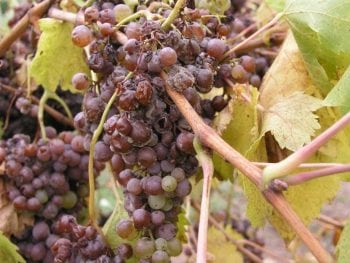 This is the one with the potential to cause problems for growers in the Hills at the moment.
This is the one with the potential to cause problems for growers in the Hills at the moment.
Botrytis spores are almost always present in vineyards.
Infection can be initiated from spores carried over from the previous season. The fungus can rest in a quiet state and then resume growth when the developing berry begins to soften. Once that happens it can then spread from berry to berry. This process is usually pretty quick especially in compact bunches of thin-skinned varieties. Botrytis also spreads readily from bunch to bunch in crowded fruit zones.
Botrytis needs about 8 hours of moisture to set off an infection period. It infects grapevine tissue via wounds and natural openings. So, think split berries, insect damage, powdery mildew infections and other physical damage. Spore germination is stimulated by sugars and amino acids in the ripening berries.
Here is a fun fact… botrytis grows 8 times faster in grape juice than in water!
So, obviously, now that the grapes are starting to ripen, it’s a really critical time for botrytis infections. Especially when you get significant rainfall events causing berries to split.
The only way to combat this one is to apply fungicides and to increase the aeration in the canopy.
Vintage 2024 will definitely go down as one of the trickier ones. Let’s hope things go smoothly between now and when we can get those precious little gapes off the vine and into the fermenter!
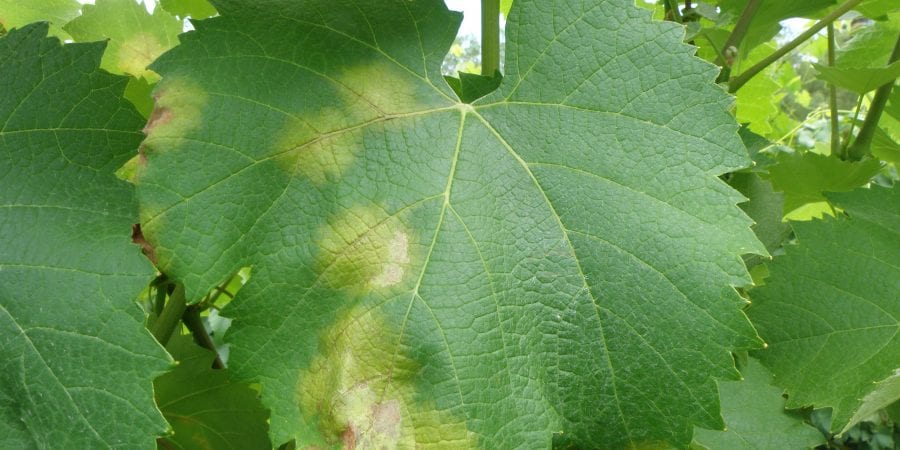
Great update thanks Maree! I hadn’t appreciated the difference between downy and powdery mildews before. Hopefully we’ll see a little more sunshine from now on. Cheers, Bob